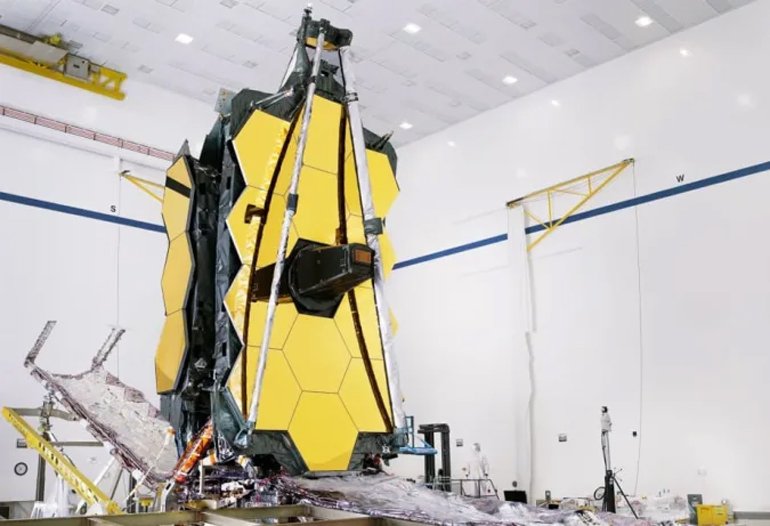NASA’s new space telescope, James Webb, has finally taken to the skies recently, but it will take some time before it begins its much-anticipated science mission.
The $10 billion James Webb Space Telescope was launched on December 25 aboard an Ariane 5 rocket from French Guiana and embarked on a long-delayed, potentially transformative mission to study the early universe, nearby exoplanets and more. But the telescope team members (and the rest of us) will need to be patient because Webb has a lot of work to do before he gets to work.
The telescope points towards Sun-Earth Lagrange Point 2 (L2), a gravitationally stable point 1.5 million kilometers from our planet in the direction of Mars. It will take about a month for Webb to get there, and there will be many exciting and worrying events for the telescope along the way.
Webb has already made several important milestones. For example, about half an hour after takeoff, it turned on the solar panels and began to absorb energy from the sun. And last night, the large telescope performed a crucial 65-minute engine burn that put it on the L2 course.
Below is a brief summary of the great strides made so far and the tasks ahead of the telescope. It is worth noting that the given timelines are approximate; Webb team members emphasize that the deployment schedule is flexible, so times and dates may change slightly or things may seem out of the ordinary.
The day after launch, Webb pointed his high-gain antenna toward Earth to further facilitate communication with his handlers. A day after that, the spacecraft performed another engine burn to improve its trajectory towards L2. Three days after launch, the pallet holding Webb’s massive sun shield, a five-layer structure designed to keep the infrared telescope and instruments cool, will be lowered.
Each of the shield’s five layers is about the size of a tennis court when fully extended, too large to fit into the payload structure of any currently operational rocket. Therefore, the sun shield was launched in a compact configuration and needs to be opened.
This unlocking process is an incredibly complex process. According to NASA officials in their video titled “29 Days on the Edge” released in October, the sun shield structure has 140 release mechanisms, 70 hinge assemblies, 400 reels, 90 cables, and eight insertion motors, all of which are planned for the five layers to work properly. like it should open.
The protective covering will come off the sun shield five days after launch, and the poles will stretch out after one day. Sunshield installation needs to be completed eight days after takeoff, at which point crew members will begin to shift their focus to optics.
About 10 days after launch, Webb will extend its 0.74-metre-wide secondary mirror; It is so named because it is the second surface that deep space photons will hit on their way to the telescope’s instruments.
Then it will be time for Webb’s 6.5m wide primary mirror to shine. Consisting of 18 hexagonal pieces, this mirror was launched folded up like a sun shield. Twelve to 13 days after launch, the mirror’s two side “wings” will extend and lock into place, giving the surface its full size.

At this point, Webb will have reached its final configuration. The massive observatory will arrive at its destination a little over two weeks later, and 29 days after launch, it will perform another engine burn and enter L2 orbit, where a different set of acceleration procedures will begin.
For example, two to three months after launch, the team will align the primary mirror segments to act as a single light-collecting surface. We can easily say that this will be a laborious and time-consuming task, since the mirror must be perfect with a precision of 150 nanometers. For comparison; A sheet of paper is about 100,000 nanometers thick.
Webb Associate Senior Project Scientist Jonathan Gardner of NASA’s Goddard Space Flight Center in Greenbelt, Maryland. com earlier this month, “One of our scientists calculated that because we lined up the mirrors with such incredible precision, we were literally moving these mirrors more slowly than the grass was growing.”
As this slow motion takes place, the team will test and tune all four of Webb’s scientific instruments. This will be a painstaking process and the goal is to begin regular science operations six months after launch.
“We’re looking forward to the end of June,” says Gardner.
Webb’s observation time will be divided into various projects selected by peer review, as with NASA’s Hubble Space Telescope. Gardner says the first year of Webb projects has already been selected, so the new observatory will start working as soon as it’s ready for use. . .